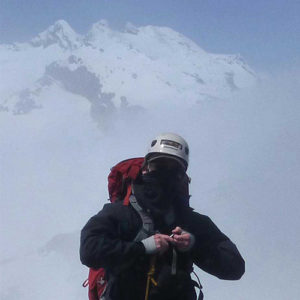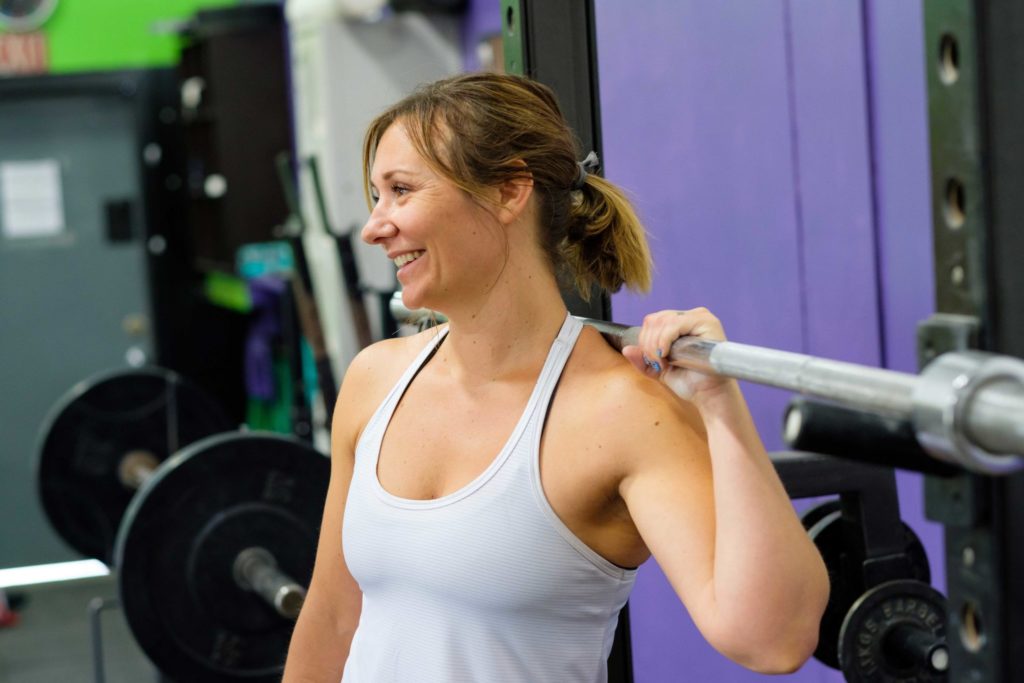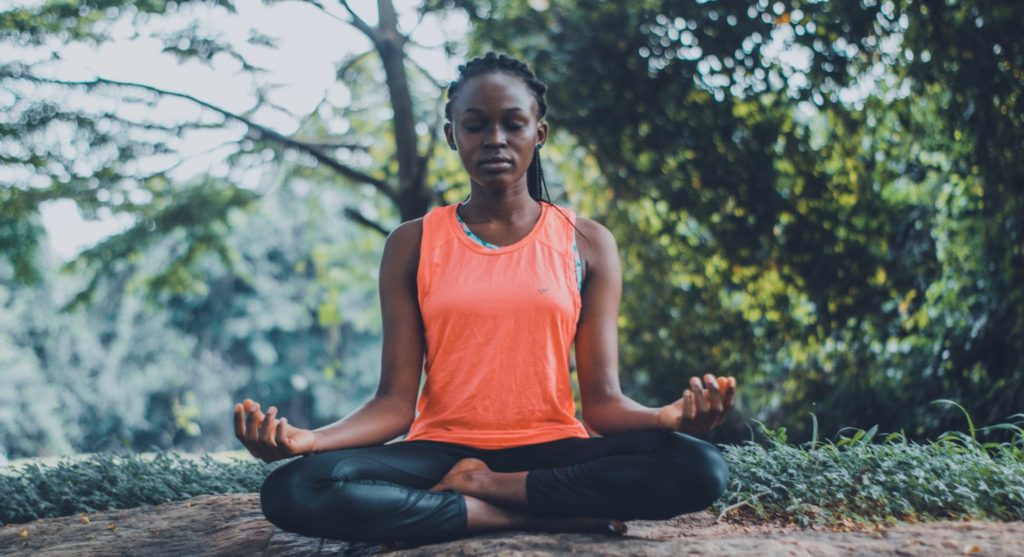The Community Domain of Everyday Resilience
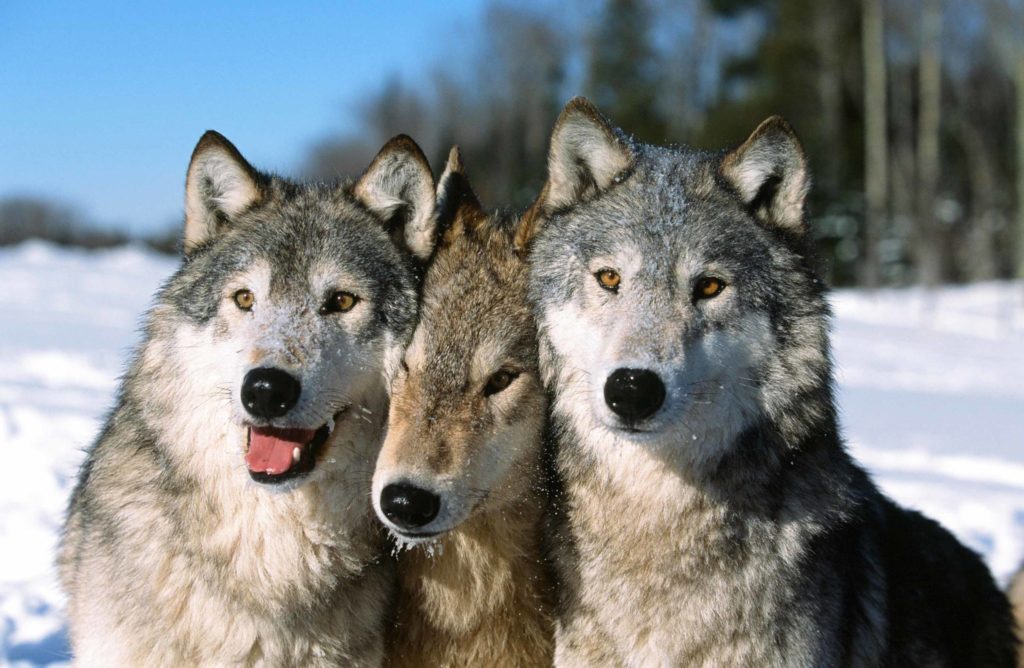
“The strength of the wolf is the pack, and the strength of the pack is the wolf.”– Kipling
A quick recap on everyday resilience
You’ll notice that we keep emphasising resilience in many of our articles and posts. This is because we believe resilience is critical in enabling personal and societal flourishing within the complex and rapidly changing world that we live in.
In an earlier article, we summarised the Everyday Resilience Framework and explained that resilience is created through the cumulative interactions between five domains: Body, Community, Purpose, Mind, and Spirit. We then explored the Body domain in a subsequent article. Today, we focus on the Community domain and its often underappreciated contribution to personal resilience.
Each of these domains has its own components, techniques, and outlook that you can use to cultivate everyday resilience. Critically, you must simultaneously work on each of the five domains to build your resilience cumulatively and efficiently – the domains all interact and need each other!
Today’s domain: Community
Many portrayals of resilience have people standing bravely alone in the face of adversity and stubbornly denying support from others as a point of pride. Such depictions tend to frame resilience as the sole product of internal resources that can only be generated from within. Such depictions fail to recognise the powerful contribution to everyday resilience offered by the Community domain.
A good example is the internet meme of the lone wolf, which is often depicted as a romantic image of grizzled independence, self-sufficiency, and stoic resilience. In reality, lone wolves exiled from their pack die quickly and alone (1), lacking the social infrastructure of the pack to successfully hunt, access protection, or collectively overcome problems.
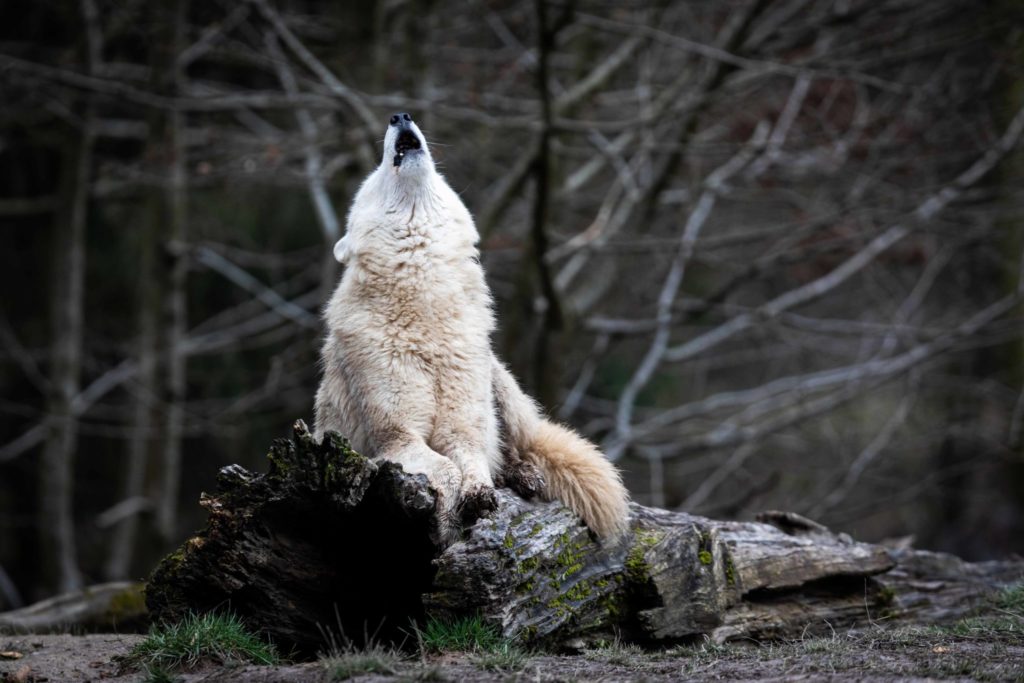
Humans are extremely social creatures. Just like wolves, we are wired at a psychosocial and neurobiological level to seek interactions with others. Indeed, our connections with others are one of the greatest sources of human well-being (2). It is also a key component of our success as a species (3), as our ability to cooperate in collectively overcoming adversity has been a powerful survival trait.
Our social connections also form a significant part of our identity. When we are denied contact with other humans (especially in extreme scenarios such as solitary confinement) or lack connection with other people, we experience significant emotional costs and increased mortality (4,5). Individual resilience is highly dependent on social systems that provide positive support, and these systems enhance resilience through a variety of psychosocial and neurobiological mechanisms (6).
You can try ‘to go it alone’, but this is simply not an optimum way to cultivate your best possible everyday resilience, as you are not engaging in a holistic development of all five domains. Also, you potentially weaken the Mind and Emotional domains by not having a social network. In this sense, ‘going it alone’ won’t boost your resilience, contrary to what the movies say.
Three practices that build your Community domain
There are three basic practices in the Community domain that you can undertake to build your envelope of resilience. These are:
1. Be prosocial and help others
2. Choose and nurture positive friendships
3. Cultivate your broader support network
Be prosocial and help others
This may be a surprise, but regularly helping others in need builds your personal resilience (7). People who regularly help others out of their own volition or who do volunteer work have higher levels of positive mental health (8).
Helping others generates a broader worldview and exposure to the adverse events and challenges that others experience. This helps you gain a sense of perspective for the adversity that you face, and look at how others address and overcome adversity, providing valuable learning opportunities (9). Helping others also provides opportunities for you to develop more social connections and expand your personal network (10).
Having a prosocial attitude is also a key component in contributing to the development of resilient communities (11). As we emphasise in this article, enabling resilient communities is essential in creating societal pathways that deliver future human flourishing. Also, living in a resilient community is a great way of accessing a broader envelope of resilience when highly significant adversity (e.g. natural disasters) strikes your neighbourhood.
Choose and nurture positive friendships
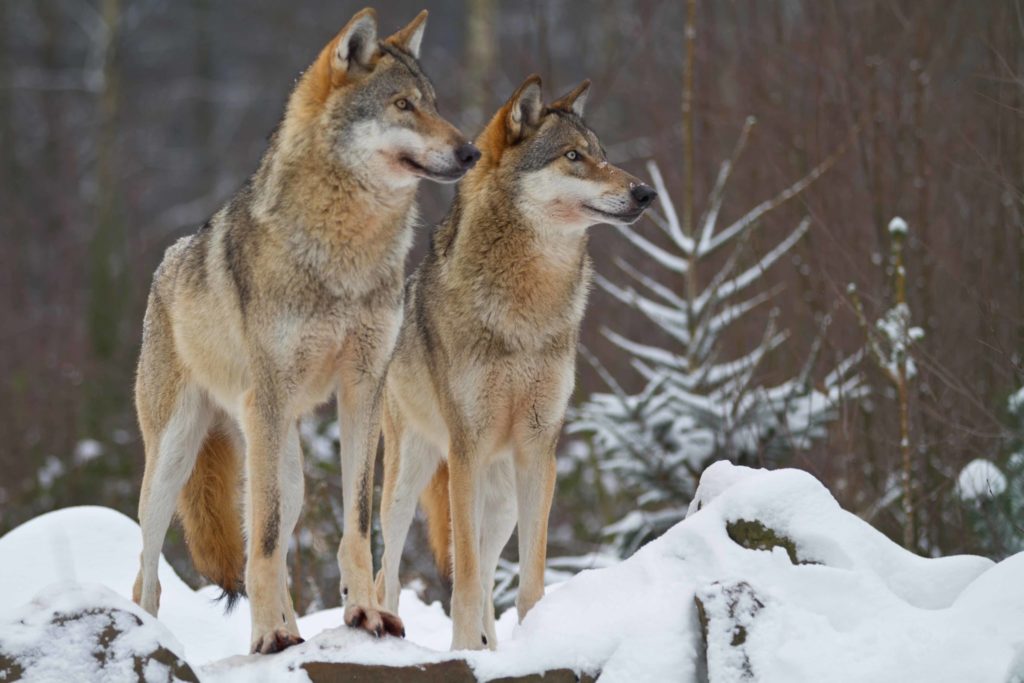
You may have heard the saying ‘you are the average of the five people you spend the most time with’, or ‘don’t fall in with a bad crowd’. These remarks relay the well-understood feature of human nature of how other people close to us can have a powerful influence on our worldview, aspirations, attitude to health, and self-image (12).
You should choose your friends carefully, and intentionally work to cultivate positive friendships. Having a handful of positive friends is essential in building resilience to adversity and thriving in the face of difficult times (13). Accessing authentic friendships that are supportive, encourage you to pursue your goals, and genuinely help you when you experience adversity, play a powerful role in your personal resilience (14). Further, simply recalling that you have reliable friends that you can fall back on when experiencing a challenging event can reduce the stress you experience (15).
Conversely, surrounding yourself with ‘frenemies’ or ‘closed’ friends that lack goals, deride your efforts at self-improvement, encourage poor health habits, or are ambivalent when you need help, will eat away at your everyday resilience. If you have this type of people in your life, you need to think carefully about how they are diminishing your overall potential for everyday resilience.
Cultivate your broader support network
In addition to having positive friendships, it also important to cultivate a broader social network with a range of connections and support organisations. Research demonstrates that resilient people are more likely to have greater levels of social connectedness (16), receive (and give) high levels of social support (17), and experience higher levels of social trust (18).
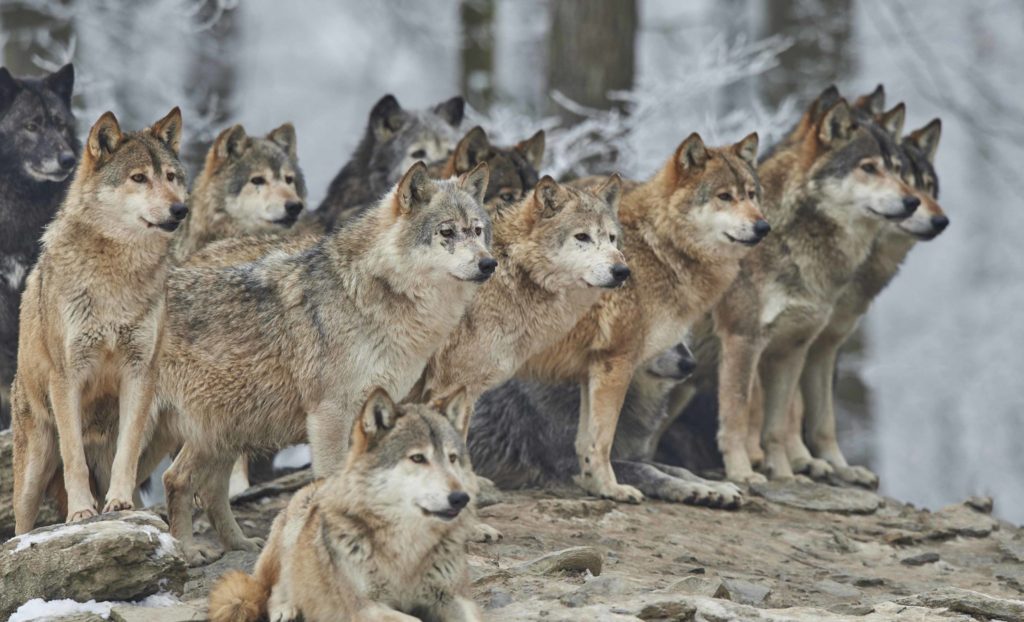
The take-home message
Don’t be a lone wolf!
Like it or not, humans are built to be incredibly social creatures and are orientated to connecting with other humans. Engaging with others in positive ways builds on this wiring and contributes to our resilience. Similarly, engaging others in negative ways, or isolating ourselves from other people, actively lowers our overall potential for everyday resilience.
Note that we are not saying that you need to be exclusively reliant on others for your own resilience – far from it. Developing your self-sufficiency to the best possible degree by building the other four domains of everyday resilience is essential in maximising not only your personal resilience, but also your potential to help others and contribute to the development of resilient communities.
In short, intentionally neglecting the development of your Community domain is not a suitable approach for maximising your everyday resilience. Engage with your fellow humans.
Don’t forget to download the FREE PDF version of the article by clicking on the link below.
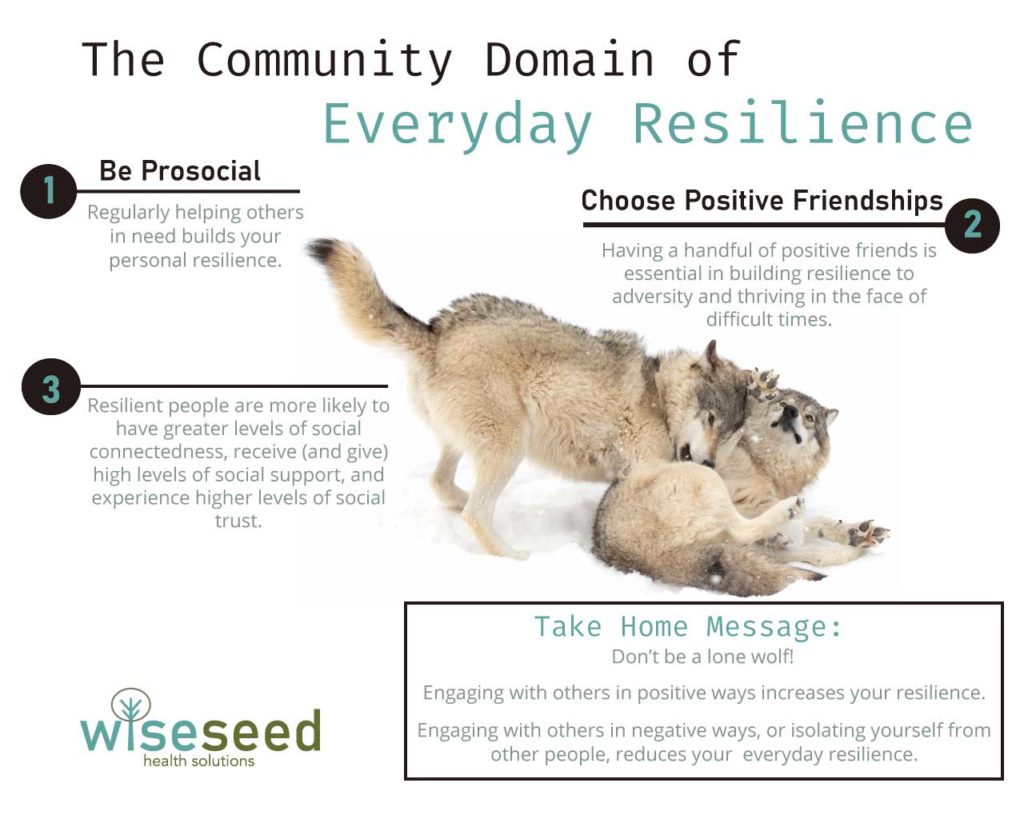
References
1. Blanco, J. C., & Cortés, Y. (2007). Dispersal patterns, social structure and mortality of wolves living in agricultural habitats in Spain. Journal of Zoology, 273(1), 114-124.
2. Helliwell, J. F., Aknin, L. B., Shiplett, H., Huang, H., & Wang, S. (2018). Social capital and prosocial behavior as sources of well-being. In E. Diener, S. Oishi, & L. Tay (Eds.), Handbook of well-being. Salt Lake City, UT: DEF Publishers. DOI:nobascholar.com
3. Harari, Y. N. (2014). Sapiens: A brief history of humankind. Random House.
4. Steptoe, A., Shankar, A., Demakakos, P., & Wardle, J. (2013). Social isolation, loneliness, and all-cause mortality in older men and women. Proceedings of the National Academy of Sciences, 110(15), 5797-5801.
5. Holt-Lunstad, J., Smith, T. B., Baker, M., Harris, T., & Stephenson, D. (2015). Loneliness and social isolation as risk factors for mortality: a meta-analytic review. Perspectives on psychological science, 10(2), 227-237.
6. Brian M. Iacoviello & Dennis S. Charney (2014) Psychosocial facets of resilience: implications for preventing posttrauma psychopathology, treating trauma survivors, and enhancing community resilience, European Journal of Psychotraumatology, 5:1, DOI: 10.3402/ejpt.v5.23970xx
7. Thoits, Peggy A., & Lyndi N. Hewitt. Volunteer Work and Well-Being. Journal of Health and Social Behavior, vol. 42, no. 2, 2001, pp. 115–131
8. Gil-Lacruz M, Saz-Gil MI, Gil-Lacruz AI. Benefits of Older Volunteering on Wellbeing: An International Comparison. Front Psychol. 2019;10:2647. Published 2019 Dec 13. doi:10.3389/fpsyg.2019.02647
9. Ozbay F, Fitterling H, Charney D, Southwick S. Social support and resilience to stress across the life span: a neurobiologic framework. Curr Psychiatry Rep. 2008;10(4):304-310. doi:10.1007/s11920-008-0049-7
10. Hay A., Gómez-Palacio A., Martyn N. (2017) Planning Resilient Communities. In: Linkov I., Palma-Oliveira J. (eds) Resilience and Risk. NATO Science for Peace and Security Series C: Environmental Security. Springer, Dordrecht. https://doi.org/10.1007/978-94-024-1123-2_11
11. Christakis, Nicholas., & Fowler, J. (2007) The Spread of Obesity in a Large Social Network over 32 Years. The New England Journal of Medicine, 357, DOI: 10.1056/NEJMsa066082
12. British Psychological Society. That’s what friends are for. ScienceDaily. ScienceDaily, 20 April 2017. <www.sciencedaily.com/releases/2017/04/170420113921.htm>
13. Ibid.
14.https://greatergood.berkeley.edu/article/item/four_ways_social_support_makes_you_more_resilient
15. Sippel, L., Pietrzak, R., Charney, D., Mayes, L., & Southwick, S. (2015). How does social support enhance resilience in the trauma-exposed individual? Ecology and Society, 20(4)
16. Ibid.
17. Helliwell, J. F., Aknin, L. B., Shiplett, H., Huang, H., & Wang, S. (2018). Social capital and prosocial behavior as sources of well-being. In E. Diener, S. Oishi, & L. Tay (Eds.), Handbook of well-being. Salt Lake City, UT: DEF Publishers. DOI:nobascholar.com
Disclaimer
The material displayed on this website is provided without any guarantees, conditions or warranties as to its accuracy.
Information written and expressed on this website is for education purposes and interest only. It is not intended to replace advice from your medical or healthcare professional.
You are encouraged to make your own health care choices based on your own research and in conjunction with your qualified practitioner.
The information provided on this website is not intended to provide a diagnosis, treatment or cure for any diseases. You should seek medical attention before undertaking any diet, exercise, other health program or other procedure described on this website. To the fullest extent permitted by law we hereby expressly exclude all warranties and other terms which might otherwise be implied by statute, common law or the law of equity and must not be liable for any damages whatsoever, including but without limitation to any direct, indirect, special, consequential, punitive or incidental damages, or damages for loss of use, profits, data or other intangibles, damage to goodwill or reputation, injury or death, or the cost of procurement of substitute goods and services, arising out of or related to the use, inability to use, performance or failures of this website or any linked sites and any materials or information posted on those sites, irrespective of whether such damages were foreseeable or arise in contract, tort, equity, restitution, by statute, at common law or otherwise.

Ten Minutes is All You Need
Research has shown that ten minutes of moderate-to-vigorous exercise performed each day is enough to significantly reduce your risk of early death.

